EV charging infrastructure supports electric vehicle adoption, providing stations and equipment for recharging batteries.
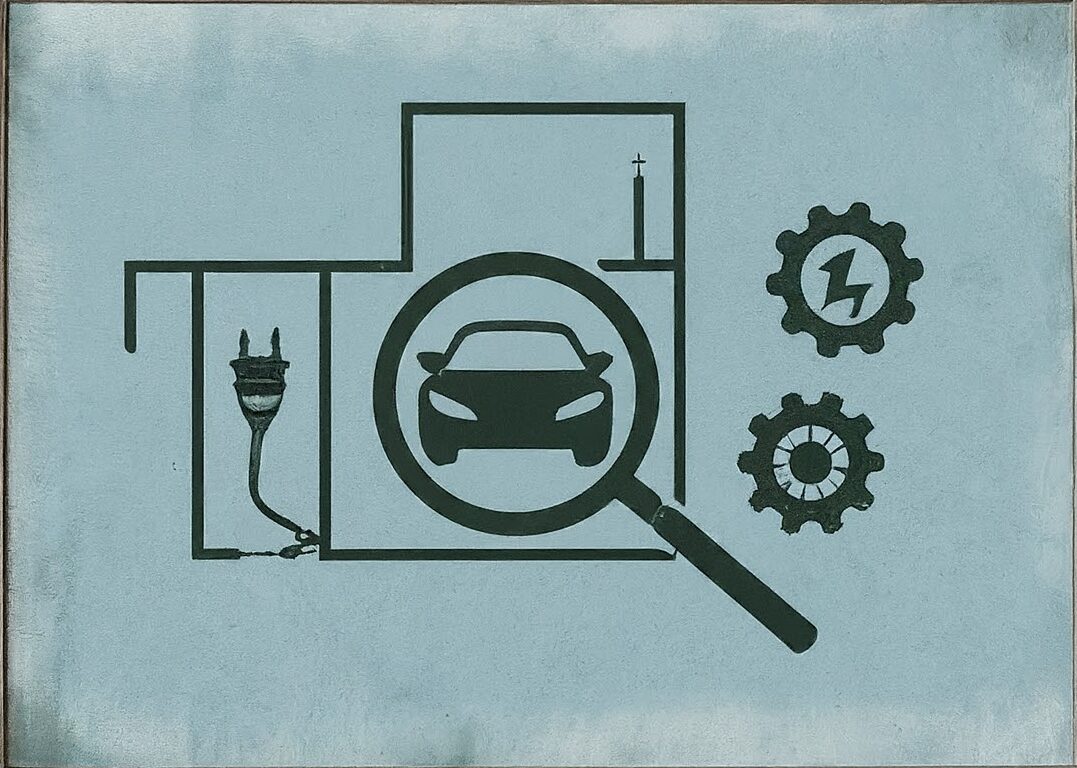
We offer end-to-end solutions for EV charger installation, encompassing planning, installation, and ongoing maintenance services, ensuring a seamless and hassle-free experience for our clients.
Charging equipment options for different scenarios include
The EV charging system provides a range of essential features for efficient operation, including remote management, user authentication via RFID cards or mobile apps, payment processing, and real-time usage analytics. Additionally, it offers configurable options for networked charging, ensuring seamless integration with existing infrastructure and adaptability to evolving technological advancements.
The charging station offers versatility with configurable options of up to 48A max per port, catering to diverse charging needs. It supports multiple payment options, ensuring convenience for users. With a dual-port design, two vehicles can charge simultaneously, optimizing efficiency and accommodating high demand. Additionally, it provides flexibility with wall or pedestal mounting options, allowing for seamless integration into different environments.
The charging station provides flexibility with configurable options of up to 80A max per port, accommodating diverse charging requirements. It offers convenience by accepting various payment options, ensuring a seamless user experience. With a dual-port design, it enables two vehicles to charge simultaneously, enhancing efficiency and convenience. Additionally, it offers flexibility with both wall and pedestal mounting options, allowing for easy installation in various settings.
This all-in-one charger ranges from 90 kW to 180 kW, catering to various charging needs efficiently. It can fast-charge two vehicles simultaneously, optimizing charging times. Certified for commercial use, it ensures reliability and safety for all users. With RFID authorization modes, access control is streamlined and secure. Additionally, it accepts various payment options for added convenience. Its weatherproof construction ensures durability and longevity, making it suitable for outdoor installations.
We offer maintenance and support for uninterrupted EV charging operations. Our proactive approach minimizes downtime, ensuring a positive user experience.
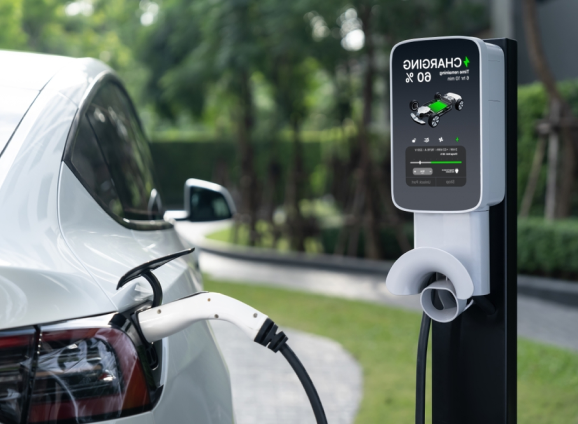
The charging industry follows the Open Charge Point Interface (OCPI) protocol, organizing stations by location, EV charging port, and connector.
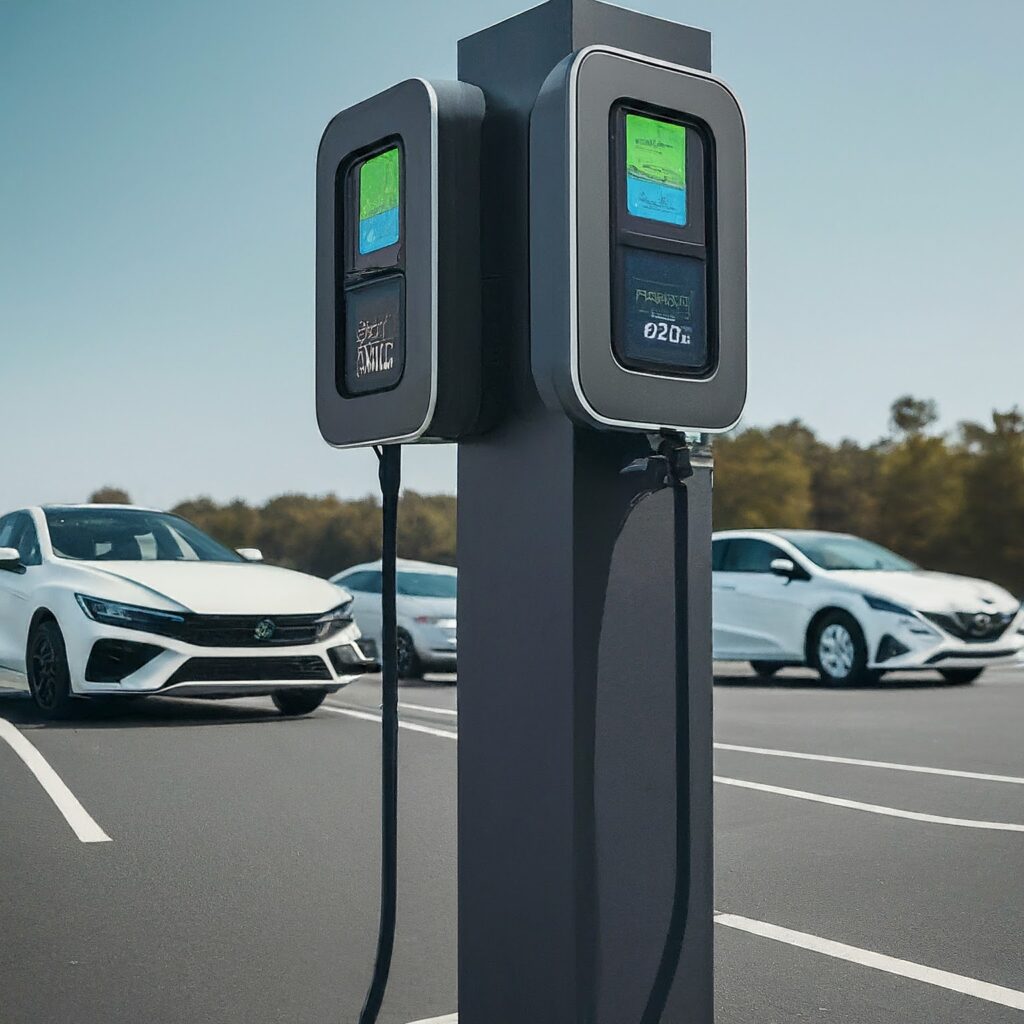
EV charger pedestals, cable management systems, and structural barriers.
EV charger pedestals provide sturdy mounting options designed for outdoor use, ensuring protection for equipment and easy access to charging cables. These pedestals comply with safety standards, making them suitable for both indoor and outdoor installations.
Additionally, cable management systems are crucial for keeping charging cables organized and off the ground, preventing damage and ensuring user convenience. Cable retractors feature auto-retracting reels for effortless cable management, available in wall-mounted or stand-mounted options.
Furthermore, structural barriers such as bollards or barrier rails add an extra layer of protection by minimizing the risk of vehicle impacts. By selecting quality infrastructure tailored to EV charger installations, you can ensure a safe and efficient charging experience for users at your facility.
When considering commercial EV charger installation, wall-mounted units offer cost advantages and are preferred if there’s suitable wall space available. This cost-effectiveness makes them an attractive choice for businesses aiming to integrate EV charging stations.
Dual port or multi-unit mounting options from various vendors further reduce overall installation costs, maximizing infrastructure utilization. This flexibility enables businesses to expand their charging infrastructure economically.
Selecting an appropriate wall location is crucial, considering factors like accessibility, visibility, and structural support. Ensuring the chosen area can withstand environmental conditions is essential for long-term durability.
Following manufacturer guidelines and local regulations ensures safe and compliant installations, preventing accidents and ensuring efficient operation. Careful planning and execution facilitate the integration of EV charging infrastructure, offering convenient solutions for customers and employees.
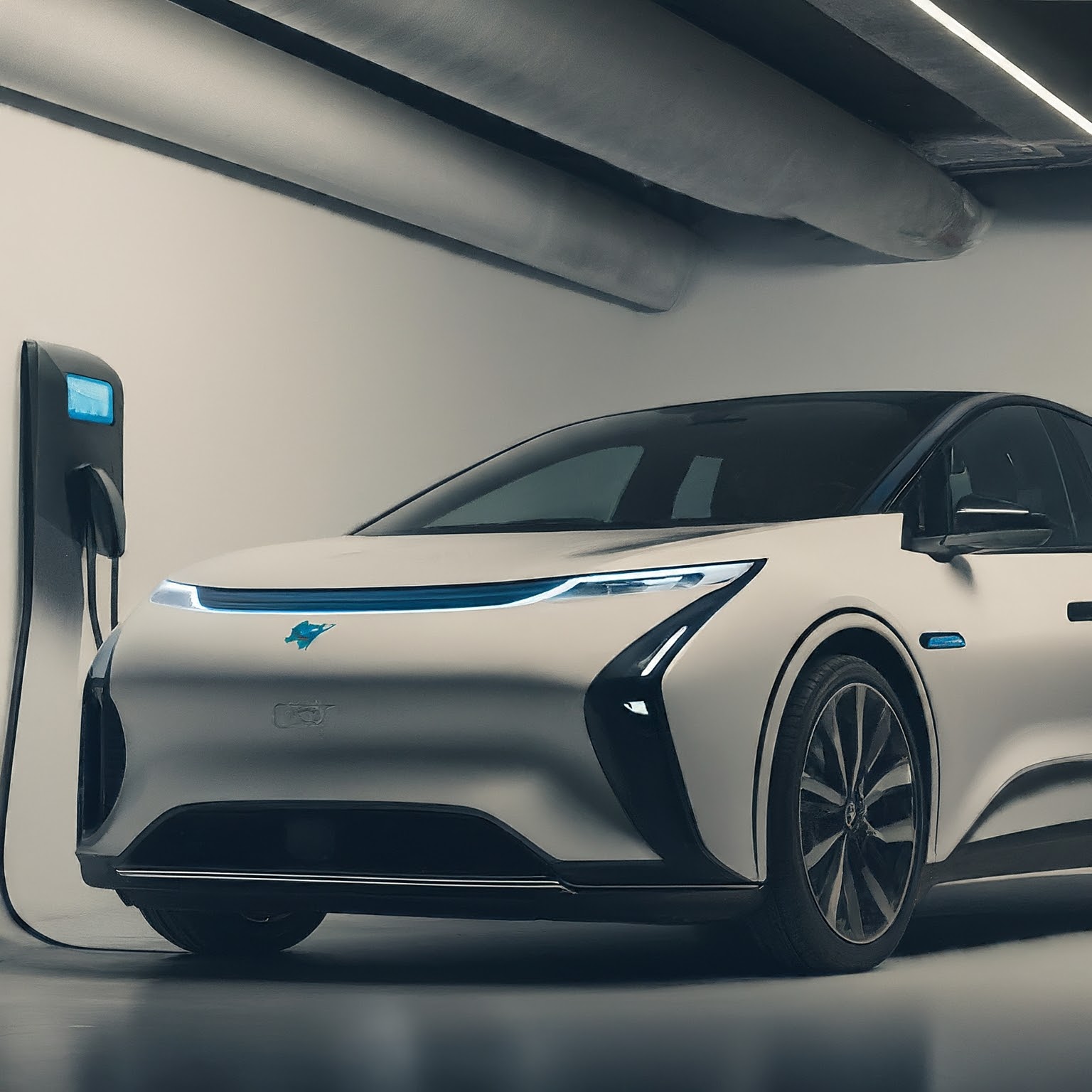
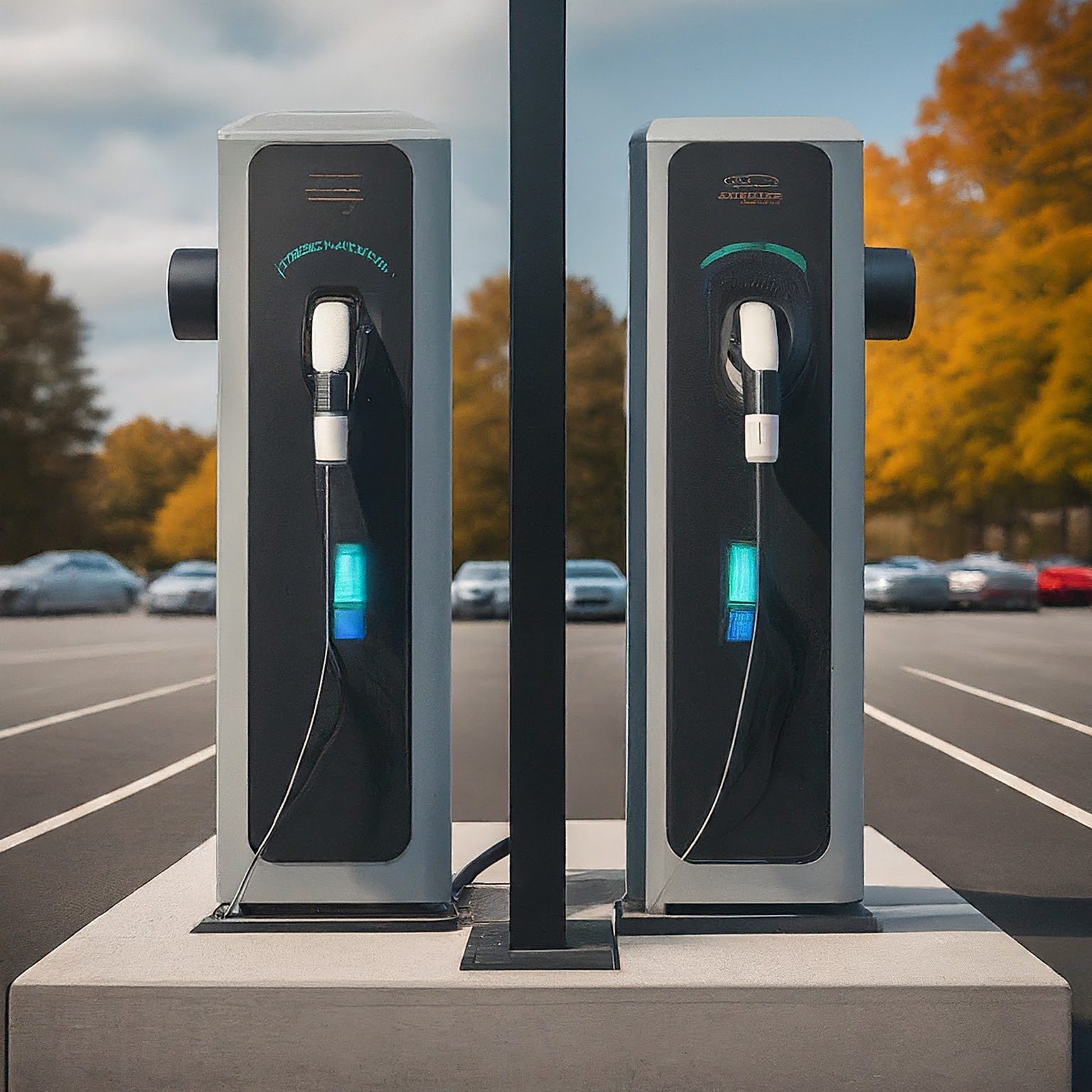
When installing DC fast chargers, ensure a sturdy concrete base pad to support the heavy unit, typically weighing between 500-1000 lbs. Position it for easy vehicle access and ADA compliance, with adequate space for maintenance. Additionally, orient the chargers north/south when possible to minimize solar glare and optimize performance.
For electrical service, install a new utility feeder line, meter, dedicated transformer, and large amperage circuit breaker to accommodate the charger’s high power rating. These components regulate electricity flow and ensure safe operation.
DC fast chargers require reliable internet connectivity for payment processing, performance monitoring, and software updates. Hardwire an ethernet cable for cybersecurity, with WiFi or cellular 4G/5G connectivity as backup options to maximize uptime.
Offer multiple payment options such as RFID cards, credit/debit cards, smartphone apps, and account billing for customer convenience. Implement smart networking features for roaming agreements and ensure PCI compliance for secure payment processing.
To further develop your charging strategy, here are three essential factors to consider when implementing commercial grade EV charging stations at your site.
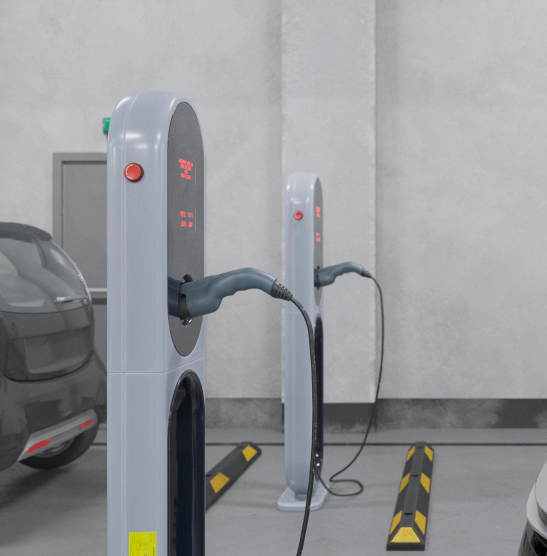
Most asked questions for BIM Coordination
Type 1 connectors, known as SAE J1772 or J plug, were commonly used in North America and Japan. They feature 5 pins and can deliver up to 19.2 kW of power over a single-phase AC line, locked to the vehicle through a manual mechanism. These connectors were added to the IEC 62196 international standard in 2009.
Type 2 connectors, also called “Mennekes,” were the European equivalent of Type 1. Introduced in 2013, they boast 7 pins and can deliver up to 43 kW of power, making them suitable for rapid charging. Type 2 connectors employ an automatic locking and release mechanism initiated by the driver and were added to the IEC 62196 standard.
Both Type 1 and Type 2 connectors feature a Control Pilot (CP) line for communication between the vehicle and charger using Pulse Width Modulation (PWM) signal. This CP line indicates various charging states, such as standby, charging allowed, and error, based on the voltage. The duty cycle of the CP signal determines the maximum current available for charging.
With the introduction of the CCS standard, Type 1 and Type 2 connectors are gradually being phased out, making them increasingly rare to find today.
The Combined Charging System Standard (CCS) encompasses various facets of EV charging, including AC and DC charging, communication protocols between charging stations and vehicles, load management, authentication, and the vehicle coupler. This system extends the capabilities of Type 1 and Type 2 AC connectors to include rapid DC charging, resulting in Combo 1 (CCS1) and Combo 2 (CCS2) connectors capable of delivering up to 350 kW of power. CCS 1 connectors are prevalent in North America, while CCS 2 connectors are common in Europe.
Introduced by seven major automotive manufacturers (Audi, BMW, Daimler, Ford, General Motors, Porsche, and Volkswagen), the CCS standard’s first prototype was showcased in May 2012. By 2014, the European Union mandated CCS2 for EV charging networks. In the US, extensive CCS networks were established along key east and west coast routes by 2016. Currently, companies seeking a portion of the $7.5 billion federal funding for the national EV charging network in the US must support CCS.
Since 2012, Tesla has held a significant presence in the North American EV market. Instead of adopting the CCS standard prevalent in the US and Europe, Tesla opted for its proprietary charging system. In November 2022, Tesla released its specifications publicly, establishing it as the North American Charging Standard (NACS). Tesla charging stations outnumber those using CCS plugs, making NACS the predominant standard in the US. Similar to CCS Combo plugs, NACS offers both AC and DC charging within a single plug, boasting a higher capacity of up to 1MW on DC.
Ford and General Motors have announced plans to embrace the NACS standard, with the first NACS-compatible vehicles expected to debut from their assembly lines in 2025. Until then, drivers of GM and Ford vehicles will require an adapter to connect to NACS chargers.
The Open Charge Point Protocol (OCPP) serves as a communication bridge between electric vehicle charging stations and central management systems. As an international, open-source standard, OCPP is vendor-independent and freely accessible, facilitating seamless interoperability within the EV infrastructure market.
Developed by the Open Charge Alliance (OCA), OCPP has emerged as the industry standard, fostering collaboration among charging equipment manufacturers, software providers, network operators, and research institutions. This standardization optimizes infrastructure investments, offering flexibility and accessibility for operators while ensuring a consistent experience for EV drivers.
A collaborative effort from various stakeholders in the EV ecosystem, including charging station manufacturers, utilities, operators, and software providers, contributed to the evolution of OCPP. The latest iteration, OCPP 2.0.1, introduces numerous enhancements in device management, transaction handling, security, smart charging capabilities, display support, and extensibility.
One notable addition in OCPP 2.0.1 is the provision for plug and charge functionality, enabling seamless interaction with electric vehicles supporting the ISO 15118 protocol. This advancement further enhances the convenience and efficiency of EV charging infrastructure, aligning with industry advancements and user expectations.
ISO 15118 stands as a globally recognized standard governing bidirectional digital communication between electric vehicles and charging stations. It establishes a Vehicle-to-Grid (V2G) communication interface, enabling both charging and discharging of electric vehicles.
A pivotal aspect of ISO 15118 is its role in facilitating Plug & Charge functionality, streamlining the EV charging experience. With this capability, EV drivers can simply insert the charge plug, initiate charging, and drive off once charging is complete. This seamless process relies on a digital certificate within the vehicle, enabling direct communication with the charging point management system (CPMS).
By leveraging ISO 15118, the charging process becomes fully automated, encompassing authentication, billing, and transaction management. This eliminates the need for external devices like RFID cards or mobile apps, as well as the hassle of memorizing PIN numbers. Ultimately, ISO 15118 enhances convenience and accessibility, paving the way for a more user-friendly EV charging ecosystem.
EV charging infrastructure refers to the network of charging stations and associated equipment that enables electric vehicles to recharge their batteries.OCPI – Open Charge Point Interface
The Open Charge Point Interface (OCPI) facilitates the exchange of information regarding charge points between charge point operators and e-mobility service providers. This enables scalable and automated EV roaming, supporting various use cases such as charge point information, authorizing charging sessions, tariffs, reservation, roaming, handling registrations, and smart charging.
The OCPI specification includes features such as providing session information with location data, sending remote commands for actions like reservations, generating charge detail records (CDRs) for billing purposes, and authorizing charging sessions through token exchange.
OCHP – Open Clearing House Protocol (e-clearing.net)
The Open Clearing House Protocol (OCHP) serves as an open-source protocol facilitating communication between a charging management system and a clearing house system. It enables seamless electric vehicle charging across charging station networks (e-Roaming), allowing eMobility service providers to connect with EV charging operators and providers for network access.
OICP – Open Intercharge Protocol
Developed by Hubject, the Open Intercharge Protocol (OICP) is a communication standard implemented between e-mobility service provider (EMSP) and charge point operator (CPO) systems through the Hubject platform. This protocol enables information exchange based on contractual relationships between EMSPs and CPOs to Hubject, facilitating reliable roaming services for electric vehicle drivers.
eMIP – eMobility Interoperation Protocol
Provided by GIREVE, the eMobility Interoperation Protocol (eMIP) enables roaming of charging services by offering charge authorization and a data clearinghouse API. It also provides access to a comprehensive charging point database, enhancing interoperability and accessibility in the electric vehicle charging ecosystem.
OpenADR – Open Automated Demand Response
OpenADR serves as an open and secured foundation for interoperable information exchange, facilitating automated demand response. This protocol enables communication between distribution system operators (DSOs), utilities, and energy management and control systems to balance energy demand during peak times. OpenADR 2.0 standardizes demand response (DR) and distributed energy resource (DER) communications, streamlining customer energy management and reducing stranded assets.
OSCP – Open Smart Charging Protocol 1.0
OSCP is an open protocol designed for communication between a charge point management system and an energy management system owned by a site owner or a distribution system operator (DSO). It enables the transmission of real-time predictions of local electricity grid capacity to charge point operators, facilitating capacity-based smart charging of electric vehicles (EVs).
Driivz Platform Features
Driivz offers a hardware-agnostic platform based on open industry standards, supporting over 750 charger models. It is formally certified for OCPP 2.0.1 by the Open Charge Alliance, compliant with ISO 15118 and OCPP 2.0.1 for vehicle-to-grid (V2G) communications. Driivz also provides full support for OCPI, OCHP, OICP (Hubject), eMIP, and other industry-standard protocols.
Additionally, Driivz offers plug-n-charge functionality to enhance the charging experience and streamline authentication processes. The platform includes autocharge features based on vehicle MAC addresses, further simplifying the charging process for EV users. Driivz is also OpenADR certified, compliant with Eichrecht (German calibration law), and offers support for proprietary protocols with integration tools.